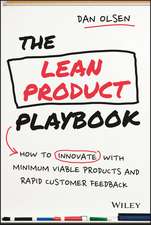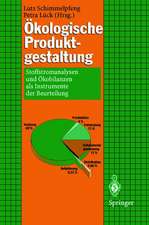Business Object Design and Implementation III: OOPSLA’99 Workshop Proceedings 2 November 1999, Denver, Colorado, USA
Editat de D. Patel, J. Sutherland, J. Milleren Limba Engleză Paperback – 21 oct 1999
Preț: 640.35 lei
Preț vechi: 800.45 lei
-20% Nou
Puncte Express: 961
Preț estimativ în valută:
122.55€ • 127.47$ • 101.17£
122.55€ • 127.47$ • 101.17£
Carte tipărită la comandă
Livrare economică 15-29 aprilie
Preluare comenzi: 021 569.72.76
Specificații
ISBN-13: 9781852332174
ISBN-10: 1852332174
Pagini: 192
Ilustrații: VII, 181 p. 33 illus.
Dimensiuni: 155 x 235 x 10 mm
Greutate: 0.28 kg
Ediția:Softcover reprint of the original 1st ed. 1999
Editura: SPRINGER LONDON
Colecția Springer
Locul publicării:London, United Kingdom
ISBN-10: 1852332174
Pagini: 192
Ilustrații: VII, 181 p. 33 illus.
Dimensiuni: 155 x 235 x 10 mm
Greutate: 0.28 kg
Ediția:Softcover reprint of the original 1st ed. 1999
Editura: SPRINGER LONDON
Colecția Springer
Locul publicării:London, United Kingdom
Public țintă
Professional/practitionerDescriere
The NCITS Accredited Standards Committee H7 Object Information Management, now part of NCITS T3 Open Distributed Processing, and the Object Management Group BUsiness Object Domain Task Force (BODTF) jointly sponsored the Fifth Annual OOPSLA Workshop on Business Object Component Design and Implementation. The focus of the workshop was on design and implementation of business object component frameworks and architectures. Key aspects discussed included: • What is a comprehensive definition of a business object component'? • Are the four layers (user, workspace, enterprise, resource) presented at the OOPSLA'98 workshop the right way to layer a..bysiness object component. system? • How is a business object component implemented across these layers? What are the associated artefacts? Are there different object models representing the same business object component in different layers? • What are the dependencies between business object components? How can they be plug and play given these dependencies? How can they be flexible and adaptive? How do they participate in workflow systems? • How will the em~rgence of a web-based distributed object-computing infrastructure based on XML, influence business object component architectures? In particular, is the W3C WebBroker proposal appropriate for distributed business object component computing? The aim of the workshop was to: • Enhance the pattern literature on the specification, design, and implementation of interoperable, plug and play, distributed business object components.
Cuprins
An Interoperability Approach for CCISs based on Business Objects and WorkFlows.- Bridging Legacy and Business Components with Parameterizable Business Objects: The BALES Methodology.- A Recursive Common Business Object System Model.- The Emergence of a Business Object Component Architecture.- Agent-Oriented Workflow: An Experience Report.- Business Processes are not represented adequately in Business Applications and Frameworks!.- Are Workers Knowledge Rich Business Objects?.- A Dynamic Business Object Architecture for Bridging the Communication Gap between Business Management and IT Professionals.- Distributed Management of Component Framework Specification.- Business Entity and Process Components.- A Generic Object Oriented Enterprise Modelling Process and an Abstraction Mechanism.- Class Identification in Business Information Systems.- Author Index.





















